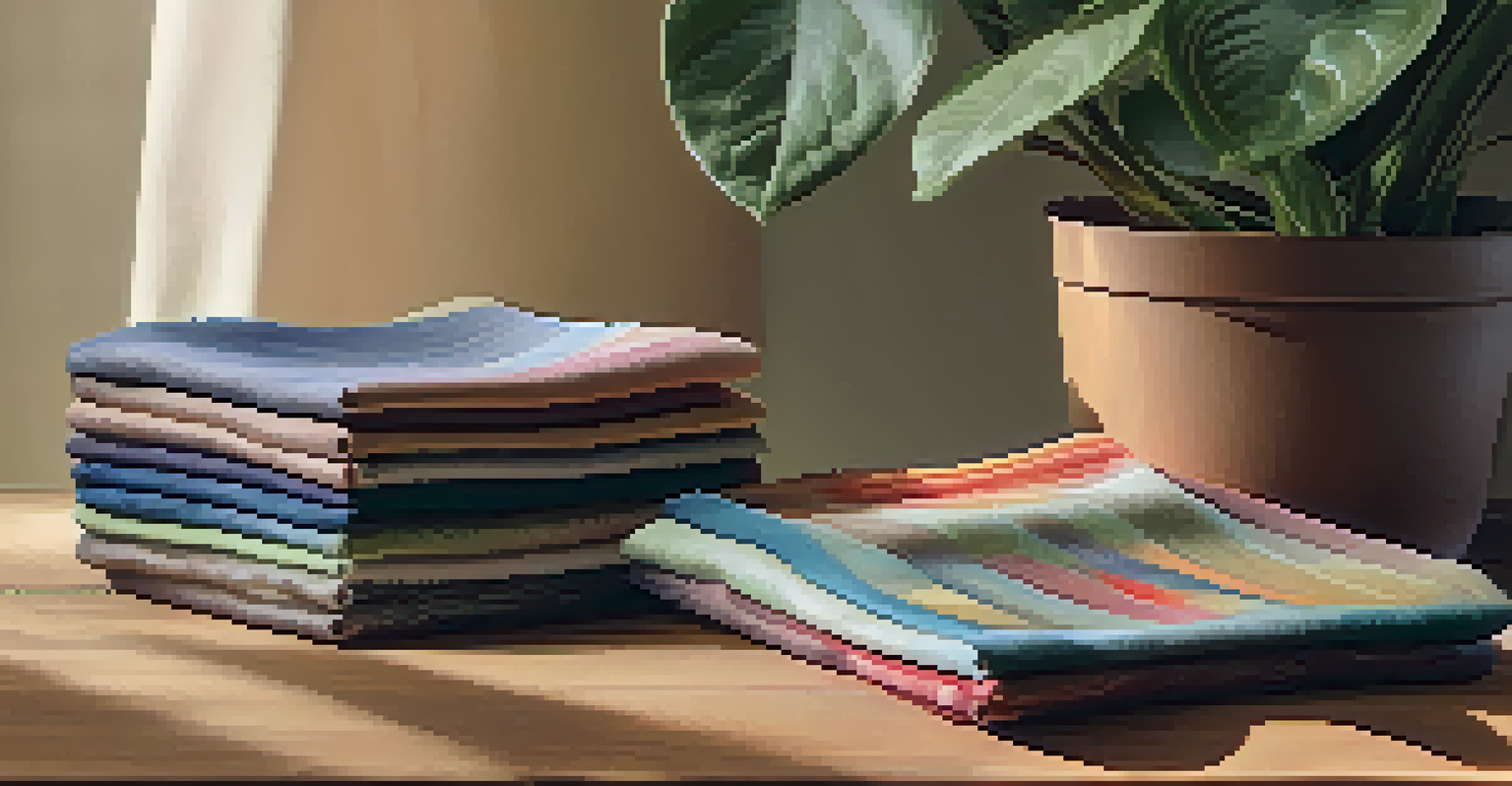The Future of Fashion: Circular Supply Chains Explained

What is a Circular Supply Chain in Fashion?
A circular supply chain is an innovative approach that aims to reduce waste in the fashion industry. Unlike traditional models that follow a linear path from production to disposal, circular supply chains focus on reusing and recycling materials. This approach not only minimizes environmental impact but also promotes sustainability and ethical practices.
The greatest threat to our planet is the belief that someone else will save it.
For example, brands like Patagonia have embraced circularity by encouraging customers to return used clothes for repair or recycling. This way, they keep materials in circulation, reducing the need for new resources. The core idea is to create a closed-loop system where products are continuously reused, thus redefining the lifecycle of fashion items.
Ultimately, adopting circular supply chains can lead to a more sustainable future for fashion, where waste is significantly reduced and resources are conserved. This shift is essential for addressing the pressing environmental issues our planet faces today.
The Benefits of Circular Supply Chains
Circular supply chains offer numerous benefits, both for the environment and for businesses. By reducing waste, companies can lower their production costs and minimize the environmental footprint of their operations. This not only enhances brand reputation but can also attract eco-conscious consumers who prioritize sustainability.

Moreover, circular models encourage innovation within the fashion industry. Brands are incentivized to develop new materials and processes that align with circular principles, leading to exciting advancements. Think of it as a creative challenge: how can we make fashion that’s not just beautiful but also responsible?
Circular Supply Chains Reduce Waste
By focusing on reusing and recycling materials, circular supply chains aim to minimize waste and promote sustainability in the fashion industry.
Additionally, embracing circular supply chains can help businesses comply with increasing regulations surrounding sustainability. As consumers demand more transparency and accountability, brands that adopt these practices will likely have a competitive edge in the marketplace.
Challenges in Implementing Circular Supply Chains
While the concept of circular supply chains is promising, there are challenges in its implementation. One major hurdle is the need for collaboration among various stakeholders in the supply chain, including manufacturers, retailers, and consumers. Each party must be willing to share information and resources to create a truly circular system.
Sustainability is no longer about doing less harm. It’s about doing more good.
Another challenge lies in the current infrastructure for recycling and waste management. Many existing systems are not equipped to handle the volume of materials that could potentially be recycled. As a result, brands may struggle to find effective ways to repurpose their products once they reach the end of their lifecycle.
Lastly, there is often a gap in consumer awareness and education about circular fashion. Many shoppers may not understand the importance of returning items for recycling or the benefits of choosing brands that prioritize circularity. Closing this gap is crucial for driving demand for sustainable practices.
Case Studies of Circular Fashion Brands
Several brands are leading the way in implementing circular supply chains with impressive results. For instance, H&M’s ‘Closing the Loop’ program incentivizes customers to return worn clothing for recycling. This initiative not only reduces waste but also allows the brand to reclaim valuable materials for new products.
Another notable example is Eileen Fisher, which has launched a take-back program called Renew. This program encourages customers to send back their old Eileen Fisher garments for refurbishment and resale. By creating a second life for these items, the brand fosters a culture of sustainability and conscious consumerism.
Consumer Participation is Crucial
Consumers play a vital role by choosing sustainable brands and participating in recycling initiatives, driving demand for circular practices.
These case studies not only showcase the practical application of circular supply chains but also illustrate the potential for broader industry change. As more brands adopt similar practices, the fashion industry can move closer to a sustainable future.
Consumer Role in Circular Supply Chains
Consumers play a vital role in the success of circular supply chains. By choosing brands that prioritize sustainability and circularity, shoppers send a clear message about their values. This, in turn, encourages more companies to adopt sustainable practices, creating a ripple effect throughout the industry.
Beyond just purchasing decisions, consumers can actively participate in the circular economy by recycling and returning clothing. Many brands now offer take-back schemes that reward customers for sending back used items. This not only helps reduce waste but also fosters a sense of community around shared goals of sustainability.
Ultimately, consumers hold significant power in shaping the future of fashion. By embracing circular practices and advocating for sustainability, they can help drive the industry toward a more responsible and eco-friendly future.
Technological Innovations Supporting Circularity
Technology plays a crucial role in facilitating circular supply chains in fashion. Innovations such as blockchain can enhance transparency and traceability in the supply chain, allowing consumers to see the journey of their clothing. This not only builds trust but also empowers shoppers to make informed choices.
Additionally, advancements in materials science are leading to the development of biodegradable fabrics and recycled materials. Brands can utilize these innovations to create products that are easier to recycle or decompose, further supporting circularity. Imagine wearing a dress that can return to the earth after its lifecycle!
Technology Enhances Circularity Efforts
Innovations like blockchain and biodegradable materials support the development of circular supply chains by improving transparency and sustainability.
Moreover, digital platforms and apps are emerging to help consumers buy, sell, and exchange pre-loved fashion items. These platforms not only extend the life of clothing but also promote a culture of reusing and recycling, making it easier for consumers to participate in the circular economy.
The Future Outlook of Circular Fashion
The future of fashion is increasingly leaning toward circularity, driven by consumer demand and environmental necessity. As awareness grows around the issues of waste and sustainability, brands will be compelled to adapt. This shift is not just a trend; it’s becoming a fundamental aspect of the industry’s evolution.
In the coming years, we can expect more brands to invest in circular supply chains, leading to innovative practices and collaborations. This could include partnerships between brands and recycling companies, as well as initiatives focused on educating consumers about sustainable practices.

Ultimately, the future of fashion hinges on our collective commitment to sustainability. By embracing circular supply chains, both consumers and brands can contribute to a healthier planet while redefining the way we think about fashion and consumption.